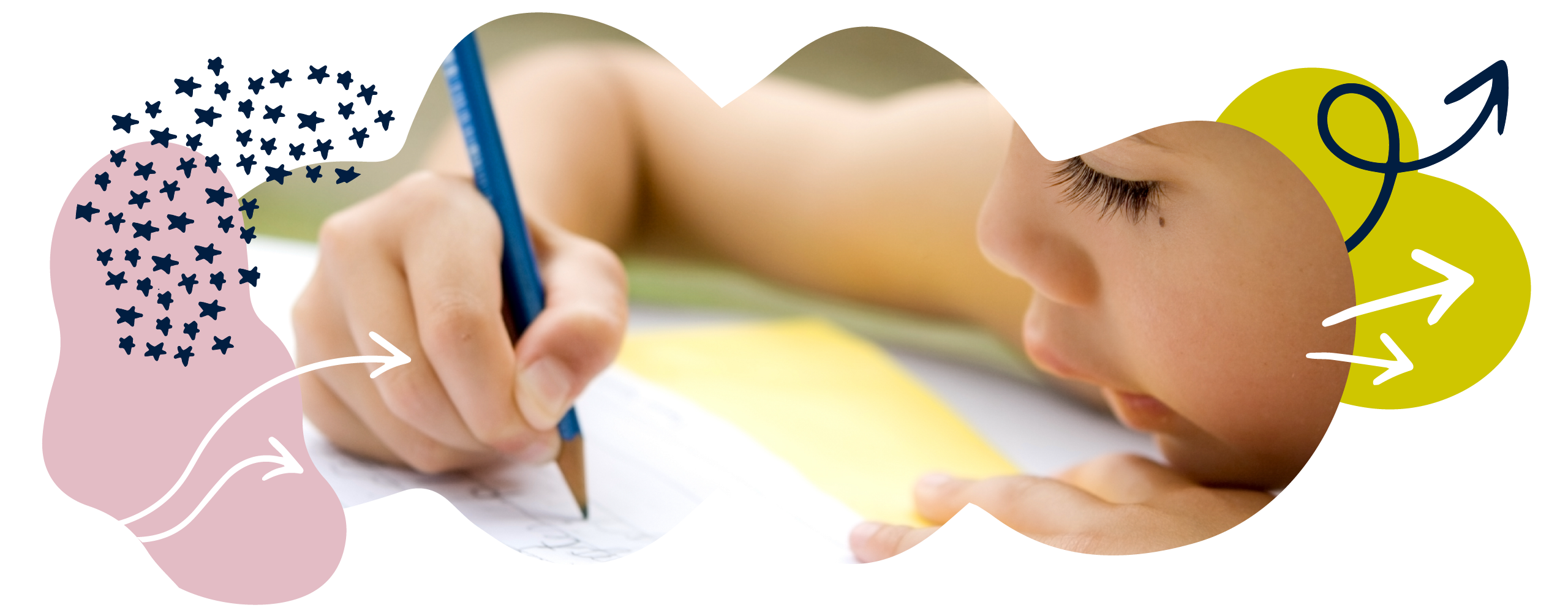Grammar & punctuation in Year 1 (age 5–6)
In Year 1, your child will use some key features of grammar and punctuation in their writing.
Read on to discover the National Curriculum expectations for grammar and punctuation in Year 1, and to find out how you can support your child at home.
What your child will learn
Take a look at the National Curriculum expectations for grammar and punctuation in Year 1 (age 5–6):
Leaving spaces between words
Combining words to make sentences
We often think about sentences as communicating one particular thought or idea. While this isn’t always true, it can be a useful way of thinking about them and helping children to decide where one sentence ends and the next one begins.
Sentences are built from clauses. A sentence might be only one clause long – a single-clause sentence (for example, ‘The girl sat down.’) – or we can join clauses together to make multi-clause sentences (for example, ‘The girl sat down and started to eat her sandwich.’). In writing, all sentences start with a capital letter and end with a full stop, question mark, or exclamation mark.
Joining words and clauses using 'and'
‘And’ is a common conjunction used to join clauses in a sentence together to make multi-clause sentences (for example, ‘We visited the zoo and the park.’). ‘And’ is likely to be one of the first conjunctions your child learns to use in their writing.
Using capital letters, full stops, question marks, and exclamation marks
Different types of sentence end with different punctuation marks to show their meaning. A full stop is used at the end of a statement, a question mark is used at the end of a question, and an exclamation mark is used for an exclamation, to show emphasis, humour, or strong emotion.
Using capital letters for names and using 'I' properly
Your child will learn to use a capital letter for proper nouns such as the names of particular people, places and things (for example, ‘James’ or ‘Scotland’). They’ll also learn to use a capital letter for the personal pronoun ‘I’, when they are writing about themselves.
Turning words into plurals using -s or -es
The plural of a noun is used when there is more than one of that thing. Your child learn about plurals forms by adding –s and –es to nouns (for example, ‘cat’ becomes ‘cats’; ‘box’ becomes ‘boxes’).
Some nouns have irregular plural endings or no plural ending at all (for example, ‘mouse’ becomes ‘mice’; ‘sheep’ stays as ‘sheep’). Your child will learn about these exceptions as they encounter them.
Adding suffixes to verbs without changing the root word
Your child will learn about some common suffixes to change the tense of a word. For instance, they will learn to add -ed to show that the action happened in the past (for example, ‘walk’ becomes ‘walked’).
Using the prefix un- to change the meaning of verbs and adjectives
Your child will learn that adding the prefix un- changes some words to the opposite meaning. It is a bit like adding the word ‘not’. For example, ‘kind’ becomes ‘unkind’.
Putting sentences together to make small narratives
While they may also write other types of writing – notes, letters, instructions – stories can give a familiar and motivating context for children to build up the length of their writing, practising joining sentences together to share their ideas.
How to help at home
There are lots of ways you can help your Year 1 child with grammar and punctuation. Here are our top ideas.
1. Read to your child
Your child will learn about how language works by speaking and listening, but the type of language we use in writing is often different from that used in speech. Reading regularly to your child, especially books they can’t yet read independently, helps them develop vocabulary and understanding far beyond what they could pick up just from spoken language.
You can find lots of free reads for your child on the Oxford Owl eBook library.
2. Encourage your child to read
Making time to hear your child read isn’t just good for their reading. By frequently seeing words in print, they will have the opportunity to see how the punctuation and grammar are used to share meaning.
When you read, occasionally look at the punctuation and talk about what it is telling the reader to do. For example, you could show your child how a question mark tells you to raise your voice at the end of the sentence to indicate a question being asked.
Explore how you can show the ‘feeling’ behind an exclamation mark. Are the characters shouting? Has something unexpected happened? Has something gone wrong?
3. Give your child opportunities to write
Writing for a real purpose can be a great way to practise using grammar and punctuation. Writing cards, shopping lists, or letters and emails to relatives can all be motivating, real-life reasons to write. Your child might enjoy keeping a diary or writing short stories based on books they have read or toys they like playing with.
4. Help your child learn key grammatical ideas
Activity sheets and books can help your child get to grips with particular points of grammar and punctuation. Take a look at our grammar activity books for some practical ideas.
5. Play grammar games
Playing games can help children to learn about grammar and punctuation in an enjoyable way. Watch grammar expert Charlotte Raby’s ‘How can I help my child with grammar, punctuation and spelling?’ video playlist to see some quick and easy games in action:
Charlotte Raby offers her expert advice for helping your child develop their grammar, punctuation, and spelling skills at home.
